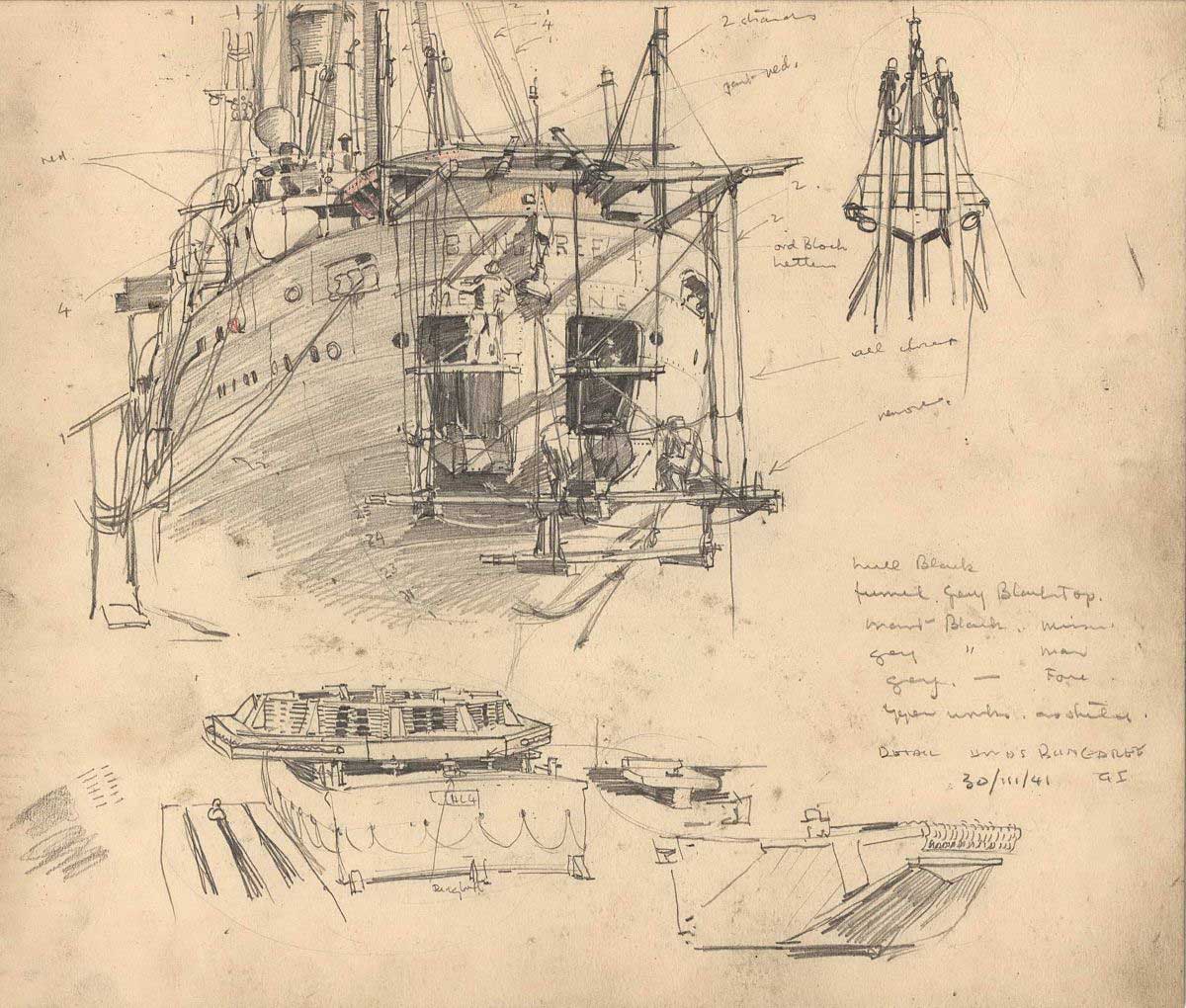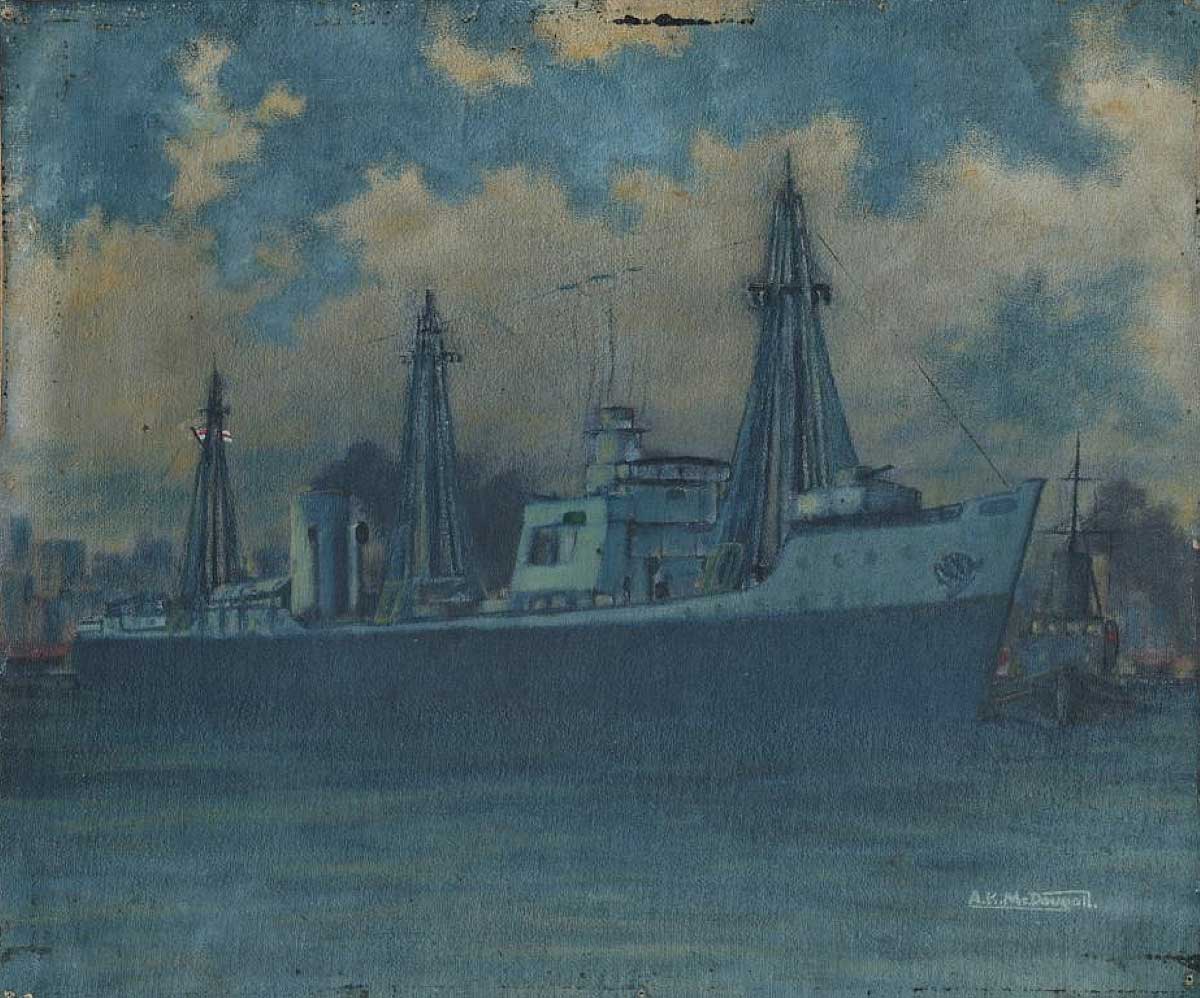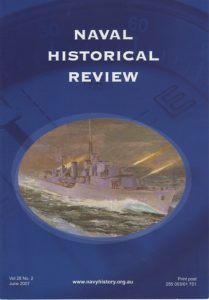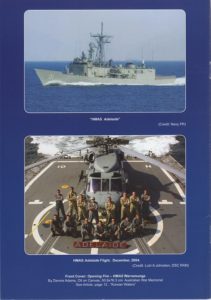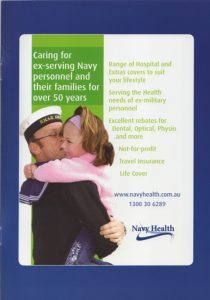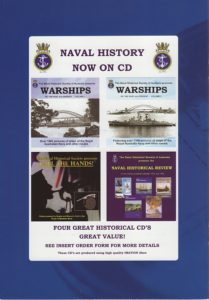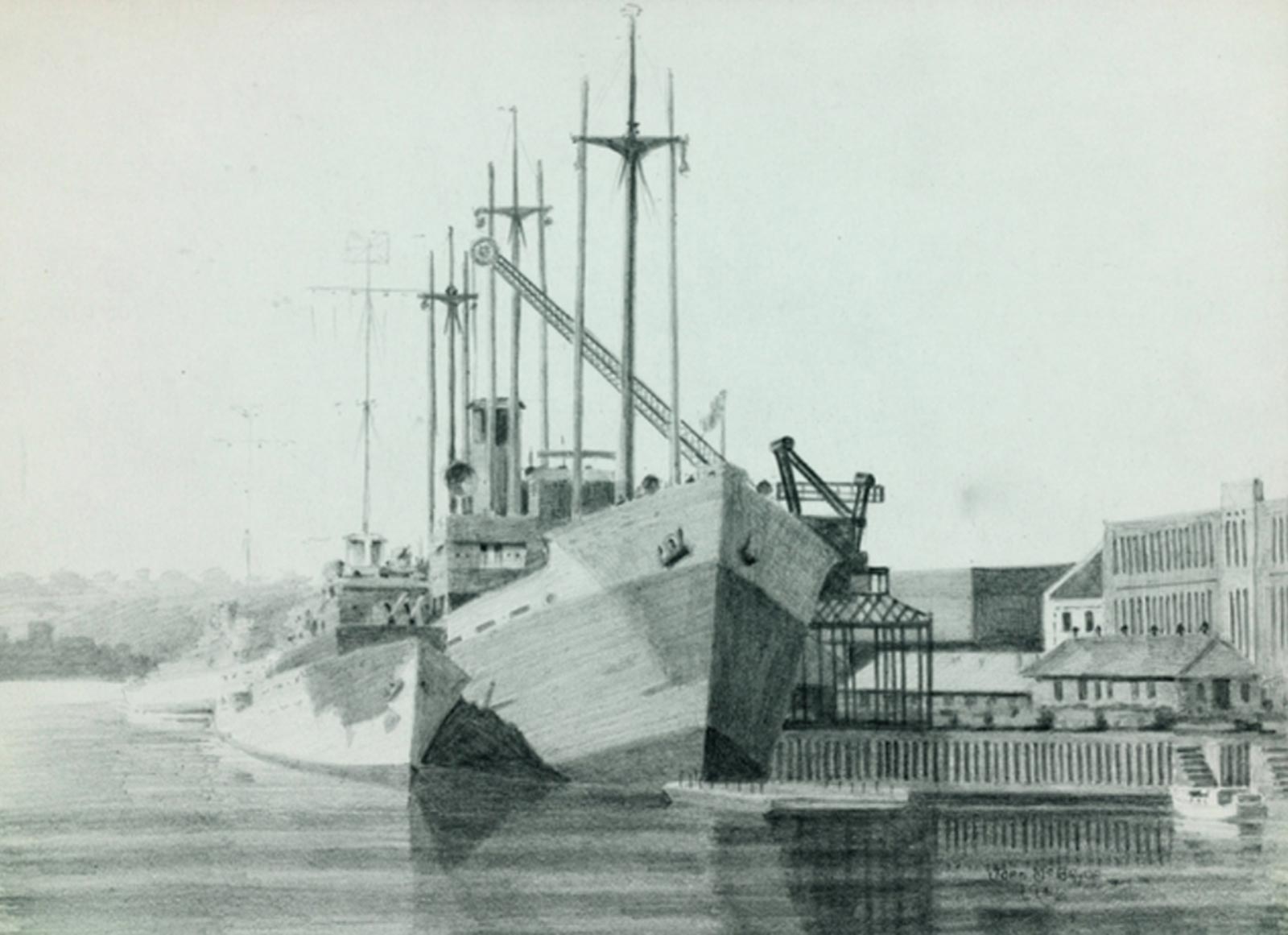
HMAS Bungaree
In September 1940, the War Cabinet approved a naval mining policy which included the acquisition of a 3000-tonne merchant vessel as an Auxiliary Minelayer. The coastal cargo ship Bungaree was requisitioned for this task on 10 October 1940 and began conversion in Sydney. Bungaree was named for the Indigenous guide, interpreter and Aboriginal community leader who lived in the Port Jackson area (c. 1775–1830).
- Commissioned
9 June 1941 - Decommissioned
7 August 1946 - Fate
Returned to owners 5 November 1947. Struck a mine and sank in Saigon River 26 May 1966.

